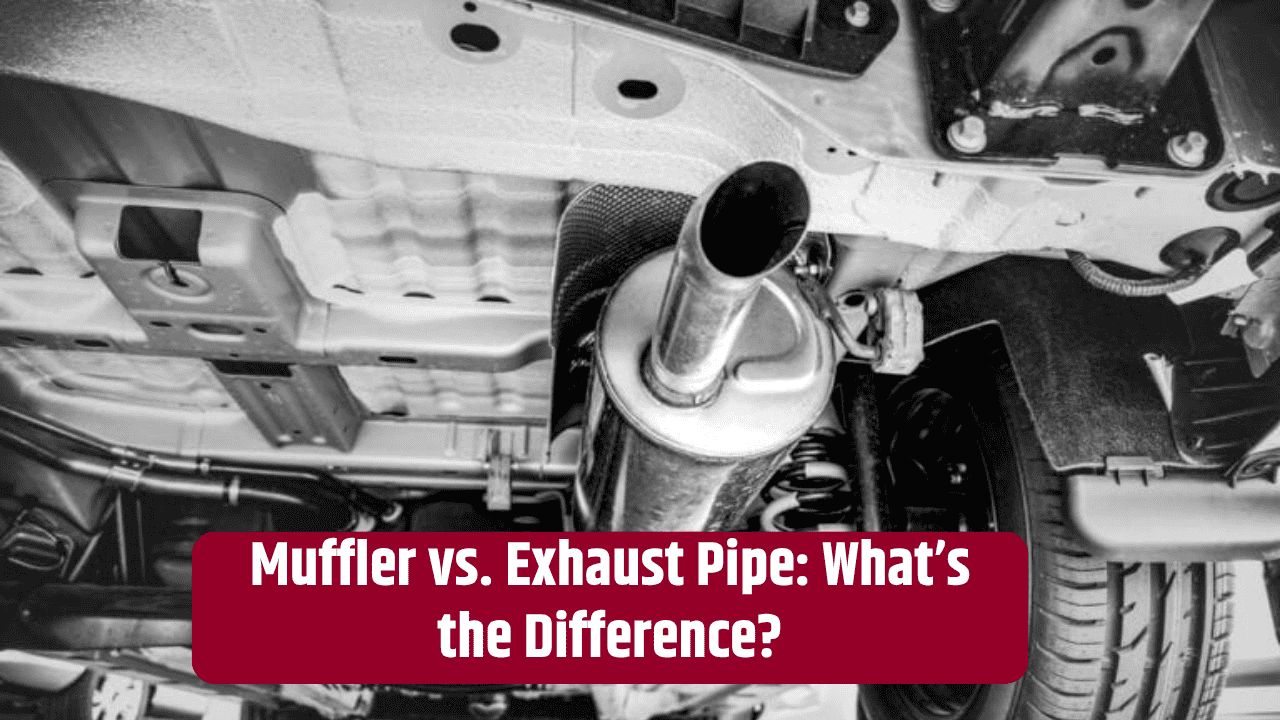If you’ve ever taken your car in for repairs or upgrades, you’ve likely heard terms like muffler and exhaust pipe used interchangeably. While both are part of your vehicle’s exhaust system, they serve very different purposes. Understanding these components can help you better maintain your vehicle, improve performance, and even avoid unnecessary repair costs.
What Is the Exhaust System?
The exhaust system in your vehicle is responsible for directing combustion gases away from the engine, reducing noise, and limiting harmful emissions. It consists of multiple components, including the exhaust manifold, catalytic converter, resonator, exhaust pipe, and muffler. Each part plays a key role, and while they work together, their functions are distinct.
Muffler: Reducing Engine Noise
The muffler is specifically designed to reduce the noise created by the engine’s exhaust gases. Located near the rear of the car, the muffler contains a series of chambers and perforated tubes that reflect sound waves to cancel each other out.
Key Functions:
- Noise Reduction: Dampens engine sound to meet legal and comfort standards.
- Backpressure Management: Affects engine performance by regulating exhaust flow.
- Heat Dissipation: Helps reduce the temperature of exhaust gases.
Exhaust Pipe: Channeling Exhaust Gases
The exhaust pipe, on the other hand, is a tube that directs exhaust gases from the engine out through the back of the car. It connects all components of the exhaust system, including the muffler.
Key Functions:
- Gas Transportation: Channels harmful gases safely away from the engine and cabin.
- Structural Support: Holds exhaust system components in alignment.
- Emission Control: Plays a role in funneling gases to the catalytic converter for treatment.
Muffler vs. Exhaust Pipe: Side-by-Side Comparison
| Feature | Muffler | Exhaust Pipe |
|---|---|---|
| Primary Function | Reduces engine noise | Directs exhaust gases |
| Location | Near the rear of the vehicle | Throughout the length of the undercarriage |
| Construction | Chambers and perforated tubes | Hollow metal tubing |
| Impact on Performance | Can affect engine backpressure | Ensures efficient gas flow |
| Maintenance Needs | Susceptible to rust and leaks | Can corrode, crack, or loosen |
Do They Work Together?
Yes, the muffler and exhaust pipe are part of the same exhaust system and work in tandem. While the pipe directs the gases, the muffler tones down the noise those gases produce. Any failure in one component can impact the efficiency and safety of the whole system.
When to Replace Each
- Muffler: If you notice loud noises, rust, or a drop in fuel efficiency, it may be time to replace your muffler.
- Exhaust Pipe: Look out for visible damage, rattling sounds, or the smell of fumes in the cabin.
Staying ahead of repairs can prevent costly damage and keep your vehicle running smoothly.
Understanding the difference between a muffler and an exhaust pipe not only helps you make informed maintenance decisions but also ensures your vehicle remains safe and compliant with emissions regulations. Whether you’re a casual driver or a car enthusiast, recognizing how these components function together can help extend your car’s life and improve its performance.
FAQs
Is the muffler part of the exhaust pipe?
Yes, the muffler is connected to the exhaust pipe but serves a different purpose—noise reduction.
Can I drive without a muffler?
Technically yes, but it’s not recommended. Driving without a muffler is loud, potentially illegal, and could reduce engine performance.
What causes mufflers to fail?
Corrosion, road salt, and constant exposure to heat and moisture are common causes.
How long do mufflers and exhaust pipes last?
On average, they can last 5–7 years but may wear out sooner depending on driving conditions and maintenance.
Will replacing the exhaust pipe improve performance?
A well-designed exhaust pipe can improve performance by enhancing airflow, especially in performance vehicles.



